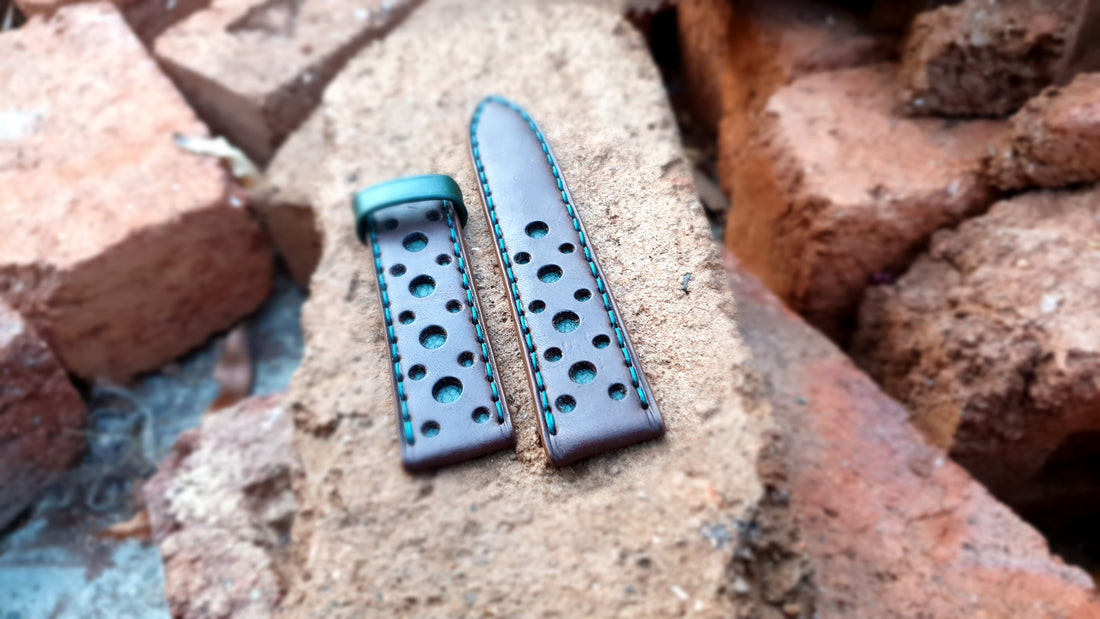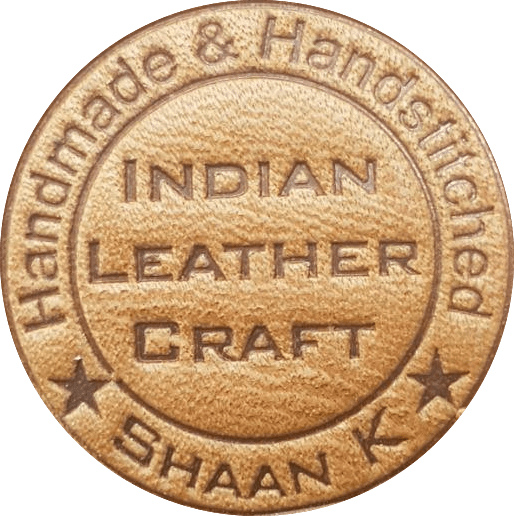
Making of leather watch strap
Share
Making of leather watch strap

When i started leather crafting in 2016, leather strap was the first product that inspired me, didn't looked like a big deal when i saw various tutorials & images of different handmade and hand stitched leather straps until i discovered the level of skills and patience required when i immensely failed in the first attempt.
With limited access to then available tools, zero knowledge of strap thickness, types and behaviour of leather to the sewing technique and thread thickness, my numerous failed attempts in the initial stage has help me to learn the advance skills required in making a 100% handmade and hand stitched leather strap for various vintage & luxury watch brands.
Watch straps are often an overlooked piece of our outfits, but they can also be used to express our sense of style.
This lockdown gave me an opportunity to pen down my technique of making a 100% handmade & hand stitched leather strap that i learned over these years.
I could have made a simple flat profile leather strap but that wouldn't be much of a challenge, so i decided to do something extraordinary and be more creative by making a racing style leather strap.
Leather Watch Strap Making Process
Quick list of tools/materials i used for making the strap are:
- Vegetable Tanned Leather
- Adhesive
- Cutting tool
- Sanding paper
- Leather hole punch
- Needle
- Polyester waxed thread 0.55mm
- Watch hardware (buckle and spring bars)

Select The Leather
I am using a green vegetable tanned leather with an approx thickness of 1.5 - 1.7mm. vegetable tanned which is also referred as vegtan leather that ages beautifully with time & use allowing the leather to develop its unique character naturally.The process is called Patina, the strap i am making is 22/22mm (22mm at the lugs & 22mm at the bottom ). The strap length is 120mm/80mm. The strap is a 2 layer leather construction ie: leather top and leather bottom.

Skiving
This step can be quite time consuming so it's important to be using a sharp knife for this. This is done because when the leather is folded over, if it isn't thinned down it would be too bulky. Skiving ensures that the folded edge still lies flat.

Punching Holes
In this step we punch holes thru the top layer of the strap by marking the centre of the strap from the stitching line for precession, although this could have been done after making the whole strap but 1 small mistake can ruin the whole strap wasting a lot of time and energy.

when finished with big holes we punch small holes on the adjacent sides to complete the racing pattern

After finishing the racing style holes the edges of the punched holes are burnished to settle down the fibre on the leather and to make the edges more refined

The top layer of the leather (green vegetable tanned) is glued on another leather which is black chevre leather that is the bottom part of the strap. The skived portion of the top layer is then glued and folded over to the bottom layer to get the strap ready for punching stitching holes.

Glued & folded

After gluing both the layers and making sure that the layers are holding strong, holes are punched from 2.5mm or 2mm from the edge of the strap this will make the stitching align properly in line and will give a clean look to the strap.

The strap is then stitched using a 0.55m polyester waxed thread. 0.45 or 0.6mm thread can also be used depending on the type of chisel / hole punch.
i use the traditional french technique of saddle stitched where every stitch loop is locked onto itself making sure the thread doesn't unravel, unlike machine stitching.
Saddle stitching is used by most french & Italian brands & leather craftsmen.

when finished stitching both sides of the strap we now treat the edges of the strap. In this project i used a sand paper for smoothing the edges of the strap as i wanted to give it a distressed look.

In the final step after achieving the desired results for the strap edges a holes is punched at the bottom of the other strap in the centre to attached the buckle.
Now we have the hardware all set in the strap ready & we are All done!
Interested in getting one for your beloved timepieces Click Here








7 comments
Please help me that where I get good stuff leather craft tools, thread, needle etc. everywhere either it’s imported or currently unavailable. I am in mumbai. Is there any Indian website or app where I can find good stuff… please help thank you
Very nice finishing with hand made work.iam very satisfied .👍👍
Please help me that where I get good stuff leather craft tools, thread, needle etc. everywhere either it’s imported or currently unavailable. I am in mumbai. Is there any Indian website or app where I can find good stuff… please help thank you
Pls inform whenever u open your shop. Stay safe n healthy.
Love you watch strap work, I am also new to the craft and find it difficult especially stitch work. So much more to learn.